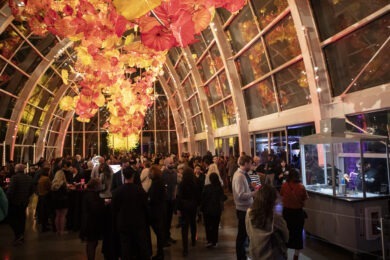Editor’s Note: Smart Meetings asked Adrian Segar, author of Conferences that Work, to share his vision for the upside of the disruption now in the events industry.
Despite the terrible impacts of the coronavirus on the meeting industry, there’s a silver lining. Hear me out! There is no question times are hard. The coronavirus pandemic has already devastated lives and businesses globally, and we don’t know how much worse things will get. The meeting industry is reeling under a wave of cancellations, postponements and uncertainty. All my short-term facilitation and on-site training engagements have been cancelled—and I’m lucky in comparison with colleagues who are struggling with the significant financial impact of the loss of work, deposits and income that a few months ago looked secure. Consequently, in the short term, the situation looks bleak.
In addition, no one knows what “short term” means right now. In the long-term, however, the current turmoil caused by the spread of COVID-19 is likely to subside. The development and introduction of an effective and affordable vaccine may bring the virus under control. Or, enough people may get COVID-19 and develop an immune response, leading to herd immunity. Eventually, the coronavirus is most likely to either burn out, or return seasonally, like influenza.
So what’s the coronavirus silver lining? I believe there are three silver linings that are long-term positives for the meeting industry.
- Virtual meetings will replace many broadcast-style meeting sessions. The dramatic cancellation of face-to-face events has led to an immediate focus on replacing them, when possible, with virtual meetings. This focus is welcome, because online technology can and should replace the lecture-centric components of conventional meetings.
- Virtual meetings process technology will improve. The pressure to find a replacement for face-to-face meetings may speed the development of technology process for connection that current platforms lack. All major online platforms support broadcast-style meetings. In small meetings, any meeting participant can become the broadcaster of the moment by speaking. As in face-to-face large meetings, this speaker-switching mechanism doesn’t work with a large group without central control over who, or how many, can speak at any moment. What virtual meeting technology currently ignores or implements poorly is participant-initiated small group voice or video chat discussions of the kind that happen at face-to-face meetings. Although some platforms implement breakout groups, they are generally limited in number, and platform facilitators initiate them rather than participants on an as-needed basis. Hopefully, a pressing demand for virtual meetings that can provide the spontaneous interaction and connection possible at face-to-face meetings will spur development of connection-centric online meeting technology features.
- We will better understand the true value of face-to-face meetings. Right now, the human race is responding to the short-term devastating effects of coronavirus by implementing physical separation, also known as social distancing. We are rapidly curtailing the ways we get together for entertainment, education and the thousands of other reasons we meet. But human beings do not thrive long-term on social distance; rather, we want and need social existence.
See also: Bounce Back Higher by Thinking Big
Over time, restricting meetings to online modalities will make us aware of what they lack: personal connection and engagement around pertinent content. Consequently, the meeting industry will better understand the unique possibilities that face-to-face events can provide. And, perhaps, we will become increasingly open to the value of human process technologies that allow meetings to become what participants actually want and need.
Adrian Segar is the author of Conferences That Work: Creating Events That People Love and Event Crowdsourcing: Creating Meetings People Actually Want and Need.




